|
At Wellness Integrated we have been supporting children with autism to calm down and have the ability to self-regulate.
I have compiled some useful information and links on craniosacral and its benefits for children with autism.
The use of Craniosacral Therapy for Autism Spectrum Disorders: Benefits from the viewpoints of parents, clients and therapists.
A 2016 preliminary study consisting of online questionnaire survey completed by 405 participants assessing craniosacral as a form of treatment for Autism Spectrum Disorders. Conclusion determines “This preliminary study introduces the concept of CranioSacral Therapy as a treatment option for symptoms associated with ASD. Its clinical use has been available for three decades but few empirical studies exist. The results of the survey suggest that CST is already being professionally recommended as a treatment. This study found that there were positive responses observed by all 3 targeted groups leading to the authors concluding that there is worthy cause to further investigate how CST benefits Autism Spectrum Disorders (ASD).”
ACCESS TO ONLINE ABSTRACT
References:
Research: Kratz, Susan Vaughan et al. The use of CranioSacral therapy for Autism Spectrum Disorders: Benefits from the viewpoints of parents, clients, and therapists. Journal of Bodywork and Movement Therapies. June 2016, 0(0). Available online:
http://www.bodyworkmovementtherapies.com/article/S1360-8592(16)30098-5/fulltext
-------------------
Autism Spectrum Disorder: How CranioSacral Therapy Can Help
By Tad Wanveer, LMT, CST-D; guest author for John Upledger, DO, OMM
http://www.massagetoday.com/mpacms/mt/article.php?id=13656
----------------------
The Right Touch: Craniosacral Therapy for Kids with Special Needs
How this whole-spine therapy can improve socialization and health of kids with ADD, ADHD and autism
https://www.parentmap.com/article/the-right-touch-craniosacral-therapy-for-kids-with-special-needs
------------------------
” Treating Autism with Craniosacral Therapy “
August 19, 2011 by
By Gloria Flores, CST-D guest author
http://compmed.com/people-helping-people/treating-autism-with-craniosacral-therapy/
Mission Impossible by Denise McCann
http://www.craniosacral.co.uk/articles/Mission%20Impossible.pdf
CRANIOSACRAL THERAPY FOR AUTISM
BY DANA MASSAT, AUGUST 28, 2012
http://ascendyoursoul.com/craniosacral-autism/
Craniosacral therapy for children with autism and/or sensory processing disorder.
- An open label (n=68) observational study of craniosacral therapy (CST) and acupuncture treatments in adults with asthma reported improved asthma quality of life scores and reduced medication usage.
- Clinicians who practice CST with patients with ASD anecdotally observe a decrease in self-injurious behavior and improved social skills. Additionally, CST is often very relaxing and calming supporting overall health and wellness. However these benefits have not been generally studied and reported in the medical literature.
- Parents report improvements in behavior, ability to focus and social skills.
https://www.guideline.gov/summaries/summary/34414
A mother who sought craniosacral therapy to help her son with autism shared her experience with ACN Latitudes. We asked the practicing physician, Dr. Richard MacDonald, to give us more information on the approach he used.
Mother of Zachary
I often recommend craniosacral therapy to parents of autistic youngsters. We tried many approaches, and while they all had value, this provided the greatest breakthrough for our son. Zachary is our third child, and had been a normal, responsive baby.
http://latitudes.org/craniosacral-therapy-and-autism/
Testimonials on Craniosacral Therapy for Children
http://www.autismweb.com/forum/viewtopic.php?t=22794#p157537
http://www.kmackinnon.com/#!How-CranioSacral-Therapy-Helps-with-a-Diagnosis-of-Autism-and-Apraxia/cf3b/56f1882c0cf2d94fab199999
Taking on Autism with Craniosacral
Therapy
http://www.globeuniversity.edu/blogs/massage-therapy-degrees/taking-on-autism-with-craniosacral-therapy
==================================================================================================
How childhood trauma could be mistaken for ADHD
Nicole
Brown’s quest to understand her misbehaving pediatric patients began with a
hunch.
Brown was
completing her residency at Johns Hopkins Hospital in Baltimore, when she
realized that many of her low-income patients had been diagnosed with attention
deficit/hyperactivity disorder (ADHD).
These
children lived in households and neighborhoods where violence and relentless
stress prevailed. Their parents found them hard to manage and teachers
described them as disruptive or inattentive. Brown knew these behaviors as
classic symptoms of ADHD, a brain disorder characterized by impulsivity, hyperactivity,
and an inability to focus.
When Brown
looked closely, though, she saw something else: trauma. Hyper-vigilance and
dissociation, for example, could be mistaken for inattention. Impulsivity might
be brought on by a stress response in overdrive.
“Despite our
best efforts in referring them to behavioral therapy and starting them on
stimulants, it was hard to get the symptoms under control,” she said of
treating her patients according to guidelines for ADHD. “I began hypothesizing
that perhaps a lot of what we were seeing was more externalizing behavior as a
result of family dysfunction or other traumatic experience.”
Inattentive,
hyperactive, and impulsive behavior may mirror the effects of adversity, and
many doctors don't know how—or don't have time—to tell the difference.
Considered a
heritable brain disorder, one in nine U.S. children—or 6.4 million youth—currently
have a diagnosis of ADHD. In recent years, parents and experts have questioned whether the growing prevalence of ADHD has to do
with hasty medical evaluations, a flood of advertising for ADHD drugs, and
increased pressure on teachers to cultivate high-performing students. Now Brown
and other researchers are drawing attention to a compelling possibility:
Inattentive, hyperactive, and impulsive behavior may in fact mirror the effects
of adversity, and many pediatricians, psychiatrists, and psychologists don’t
know how—or don’t have the time—to tell the difference.
Though ADHD
has been aggressively studied, few researchers have explored the overlap
between its symptoms and the effects of chronic stress or experiencing trauma
like maltreatment, abuse and violence. To test her hypothesis beyond Baltimore,
Brown analyzed the results of a national survey about the health and well-being
of more than 65,000 children.
Brown’s
findings, which she presented in May at an annual meeting of the Pediatric
Academic Societies, revealed that children diagnosed with ADHD also experienced
markedly higher levels of poverty, divorce, violence, and family substance
abuse. Those who endured four or more adverse childhood events were three times
more likely to use ADHD medication.
Interpreting
these results is tricky. All of the children may have been correctly diagnosed
with ADHD, though that is unlikely. Some researchers argue that the difficulty
of parenting a child with behavioral issues might lead to economicc hardship, divorce, and even physical abuse. This is particularly true for parents who
themselves have ADHD, similar impulsive behavior or their own history of
childhood maltreatment. There is also no convincing evidence that trauma or
chronic stress lead to the development of ADHD.
For Brown,
who is now a pediatrician at Montefiore Medical Center in the Bronx, the data
are cautionary. It’s not evident how trauma influences ADHD diagnosis and
management, but it’s clear that some misbehaving children might be experiencing
harm that no stimulant can fix. These children may also legitimately have ADHD,
but unless prior or ongoing emotional damage is treated, it may be difficult to
see dramatic improvement in the child’s behavior.
“We need to
think more carefully about screening for trauma and designing a more
trauma-informed treatment plan,” Brown says.
Dr. Kate
Szymanski came to the same conclusion a few years ago. An associate professor
at Adelphi University’s Derner Institute and an expert in trauma, Szymanski
analyzed data from a children’s psychiatric hospital in New York. A majority of
the 63 patients in her sample had been physically abused and lived in foster
homes. On average, they reported three traumas in their short lives. Yet, only
eight percent of the children had received a diagnosis of post-traumatic stress
disorder while a third had ADHD.
“I was
struck by the confusion or over-eagerness–or both–to take one diagnosis over
another,” Szymanski says. “To get a picture of trauma from a child is much
harder than looking at behavior like impulsivity, hyperactivity. And if they
cluster in a certain way, then it’s easy to go to a conclusion that it’s ADHD.”
A previous
edition of the Diagnostic and Statistical Manual of Mental Disorders urged
clinicians to distinguish between ADHD symptoms and difficulty with
goal-directed behavior in children from “inadequate, disorganized or chaotic
environments,” but that caveat does not appear in the latest version.
Unearthing details about a child’s home life can also be challenging, Szymanski
says.
It's not
clear how many children are misdiagnosed with ADHD annually, but the number
could be nearly 1 million.
A child may
withhold abuse or neglect to protect his family or, having normalized that
experience, never mention it all. Clinicians may also underestimate the
prevalence of adversity. Th Adverse Childhood Experience Study,
a years-long survey of more than 17,000 adults, found that two-thirds of
participants reported at least one of 10 types of abuse, neglect, or household
dysfunction. Twelve percent reported four or more. That list isn’t exhaustive,
either. The study didn’t include homelessness and foster care placement, for
example, and the DSM doesn’t easily classify those events as “traumatic."
It’s not
clear how many children are misdiagnosed with ADHD annually, but study published in
2010 estimated the number could be nearly 1 million. That research compared the
diagnosis rate amongst 12,000 of the youngest and oldest children in a
kindergarten sample and found that the less mature students were 60 percent
more likely to receive an ADHD diagnosis.
Though ADHD
is thought to be a genetic condition, or perhaps associated with lead or
prenatal alcohol and cigarette exposure, there is no brain scan or DNA test
that can give a definitive diagnosis. Instead, clinicians are supposed to
follow exhaustive guidelines set forth by professional organizations, using
personal and reported observations of a child’s behavior to make a diagnosis.
Yet, under financial pressure to keep appointments brief and billable,
pediatricians and therapists aren’t always thorough.
“In our
15-minute visits—maybe 30 minutes at the most—we don’t really have the time to
go deeper,” Brown says. If she suspects ADHD or a psychological condition,
Brown will refer her patient to a mental health professional for a
comprehensive evaluation. “You may have had this social history that you took
in the beginning, but unless the parent opens up and shares more about what’s
going on in the home, we often don’t have the opportunity or think to connect
the two.”
Caelan
Kuban, a psychologist and director of the Michigan-based National Institute for
Trauma and Loss in Children, knows the perils of this gap well. Four years ago
she began offering a course designed to teach educators, social service workers
and other professionals how to distinguish the signs of trauma from those of
ADHD.
“It’s very
overwhelming, very frustrating,” she says. “When I train, the first thing I
tell people is you may walk away being more confused than you are right now.”
In the
day long seminar, Kuban describes how traumatized children often find it
difficult to control their behavior and rapidly shift from one mood to the
next. They might drift into a dissociative state while reliving a horrifying
memory or lose focus while anticipating the next violation of their safety. To
a well-meaning teacher or clinician, this distracted and sometimes disruptive
behavior can look a lot like ADHD.
Kuban urges
students in her course to abandon the persona of the “all-knowing clinician”
and instead adopt the perspective of the “really curious practitioner.”
Rather than
ask what is wrong with a child, Kuban suggests inquiring about what happened in
his or her life, probing for life-altering events.
Jean West, a
social worker employed by the school district in Joseph, Missouri, took Kuban’s
course a few years ago. She noticed that pregnant teen mothers and homeless
students participating in district programs were frequently diagnosed with
ADHD. This isn’t entirely unexpected: Studies have shown that ADHD can be more prevalent among low income youth, and that children and adolescents
with the disorder are more prone to high-risk behaviour. Yet, West felt the students’ experiences might
also explain conduct easily mistaken for ADHD.
Kuban’s
course convinced West to first consider the role of trauma in a student’s life.
“What has been the impact? What kind of family and societal support have they
had?” West asks. “If we can work on that level and truly know their story,
there’s so much power in that.”
As a school
official, West sometimes refers troubled students to a pediatrician or
psychiatrist for diagnosis, and meets with parents to describe how and why
adversity might shape their child’s behavior. In her private practice, West
regularly assesses patients for post-traumatic stress disorder instead of, or
in addition to, ADHD.
Though
stimulant medications help ADHD patients by increasing levels of
neurotransmitters in the brain associated with pleasure, movement, and
attention, some clinicians worry about how they affect a child with PTSD, or a
similar anxiety disorder, who already feels hyper-vigilant or
agitated. The available behavioral therapies for ADHD focus on time
management and organizational skills, and aren’t designed to treat emotional
and psychological turmoil.
Instead,
West teaches a traumatized child how to cope with and defuse fear and anxiety.
She also recommends training and therapy for parents who may be contributing to
or compounding their child’s unhealthy behavior. Such programs can help parents
reduce their use of harsh or abusive discipline while improving trust and
communication, and have been known decrease disruptive child behavior.
Szymanski
uses a similar approach with patients and their parents. “I think any
traumatized child needs individual therapy but also family therapy,” she says.
“Trauma is a family experience; it never occurs in a vacuum.”
Yet finding
a provider who is familiar with such therapy can be difficult for pediatricians
and psychiatrists, Szymanski says. Though some hospitals have centers for
childhood trauma, there isn’t a well-defined referral network. Even then,
insurance companies, including the federal Medicaid program, may not always pay
for the group sessions commonly used in parent training programs.
Faced with
such complicated choices, Szymanski says it’s no surprise when clinicians
overlook the role of trauma in a child’s behavior and focus on ADHD instead.
Inattentive
and hyperactive behavior can be traced back to any number of conditions—just
like chest pains don't have the same origin in every patient.
While there
are few recommendations now for clinicians, that will likely change in the
coming years. The American Academy of Pediatrics is currently developing new
guidance on ADHD that will include a section on assessing trauma in
patients, though it won’t be completed until 2016.
Dr. Heather
Forkey, a pediatrician at University of Massachusetts Memorial Medical Center,
who specializes in treating foster children, is assisting the AAP. Her goal is
to remind doctors that inattentive and hyperactive behavior can be traced back
to any number of conditions—just like chest pains don’t have the same origin in
every patient. Ideally, the AAP will offer pediatricians recommendations for
screening tools that efficiently gauge adversity in a child’s life. That
practice, she says, should come before any diagnosis of ADHD.
When
speaking to traumatized children inappropriately diagnosed with ADHD, she
offers them a reassuring explanation of their behavior. The body’s stress
system, she says, developed long ago in response to life-or-death threats like
a predatory tiger. The part of the brain that controls impulses, for example,
shuts off so that survival instincts can prevail.
“What does
that look like when you put that kid in a classroom?” Forkey asks. “When people
don’t understand there’s been a tiger in your life, it looks a lot like ADHD to
them.”
Source: http://www.theatlantic.com/health/archive/2014/07/how-childhood-trauma-could-be-mistaken-for-adhd/373328/
====================================================================================================================================================
INSPIRE: Barbara Huntress Tresness
Barbara Huntress Tresness lived a storybook life. She didn’t have birds braiding her hair and forest creatures doing her dishes, but her life had no major issues. She met her husband while studying psychology at the University of Vermont, and eventually moved to the Syracuse area. The couple was raising two boys, with a third on the way.
Then Barb’s placenta abrupted. She had an emergency C-section. Her son Graham was born at 35 weeks with cerebral palsy. Doctors told Barb that he might not make it through the night. He did, and now he’s one of Barb’s greatest inspirations.
“As a person, when you’re faced with a challenge, some people get stuck. And I just, as a person, said I’m not going to get stuck in the anger or the bitter,” she reminisced. “I’m going to find a way through.”
The first few years were tough. When Graham was born in 2000, he was silent. It consumed Barb. She remembers thinking, ‘Why was he not crying?’ When the tears came, it was loud, hard and continuous.
“You have a bad time with a sick child, and it’s a few days. This was unending,” she said, explaining that it lasted for years, and she didn’t know what to do for him. She followed the experts’ instructions, but nothing seemed to work; in some cases, medicines seemed to agitate her son even more.
When Graham was 4 years old, Barb heard about craniosacral therapy, a form of massage founded by Dr. John Upledger. She contacted a therapist, and he came to the house. When he began his work, it didn’t appear he was doing much, Barb admits, but then Graham stopped crying.
“And I’m staring,” she recalled. “And then all of the sudden, he smiled for the first time.”
Around the same time, the family took a trip to the Las Vegas, and stayed in a hotel with animals. Barb was surprised when a trainer asked her if Graham wanted to touch a dolphin. She hesitantly agreed, not even sure that her son could touch it. Much to her amazement, he did; and in return, the dolphin picked up her head and touched Graham. The crowd was in awe, Barb remembered.
“They had this connection, and it was immediate,” she said. “And I thought, ‘OK, there’s something to this dolphin thing. I’ve got to pursue this.’”
In August 2004, Barb followed the idea of dolphin therapy to the Upledger Institute in the Bahamas. She had no idea what to expect, but the animals seemed to intuitively know how to approach Graham, and had a positive effect on him. Moreover, shortly after the family returned home, Graham took his first unaided weight-bearing steps.
“And the only thing I’d done differently was the dolphin therapy with Upledger. So I knew then that there was something really magical about this,” she said. She continued on her journey with Graham, becoming a licensed massage therapist and learning craniosacral therapy.
Despite all of this growth, Graham still faced one major issue: communication. It’s not that people were intentionally dismissive; many simply didn’t know how to interact with someone like Graham, who Barb describes as a “nonverbal communicator.”
“I was telling our story, and I’m passionate about it. I realized that I’m just a mom in Manlius, NY. This is a global issue. This is misunderstanding disability and communication up here,” she said, raising her hand to a high “macro” level.
In the last few years, Barb and her husband have partnered with organizations like Syracuse University’s Burton Blatt Institute and AccessCNY to found CHAT Collective. The business started as a week-long summer camp, and then a club, but Barb wanted something less labor-intensive that could reach more people.
“How can we take what worked – the socialization, the communication and the awareness – and bring it to the community?” she pondered.
Now, CHAT Collective aims to help verbal people understand that communication is a universal concept, and doesn’t always occur in an exchange of spoken words. She’s written a guidebook and designed hand bands, communication cards, dog tags and T-shirts to help bridge the gap.
Barb remembers every piece of her 16-year tale in great detail. In sharing it, she’s not looking for pity or sympathy for herself or Graham. She’s not bragging about her strength. She’s just straightforward and honest.
“The whole journey started with me as a mom, who was overwhelmed,” Barb said simply.
They still have trying days. People still stare. While there are a lot people who – thanks to CHAT Collective – know how to interact with nonverbal and limited communicators, there’s still plenty who lack that knowledge.
At the end of last year, Barb shared her story in the memoir, “Beyond a Charmed Life: A Mother’s Unconditional Love.”
“I wanted people to know that they’re not alone. And I wanted them to take the journey with me and see all that we went through,” she explained. “And then you can appreciate whatever your next challenge is. You might come at it differently, because you’ve lived through someone else’s journey.”
CHATting Together
By Lorna Oppedisano
Source: http://www.syracusewomanmag.com/swm/?p=3120
=========================================================
Overkill
An avalanche of unnecessary medical care is harming patients physically and financially. What can we do about it?
If this is the trend in hospitals, we have to be careful and do our own research before agreeing to any surgical procedures.
Sad to say we personally experienced this when my husband was diagnosed with gall stones and had to go for emergency surgery which could have been avoided if the doctors were not so money faced.
Click here to read this interesting article about the unnecessary procedures the hospitals tend to do to us.
http://www.newyorker.com/magazine/2015/05/11/overkill-atul-gawande
===============================================
Holding your space
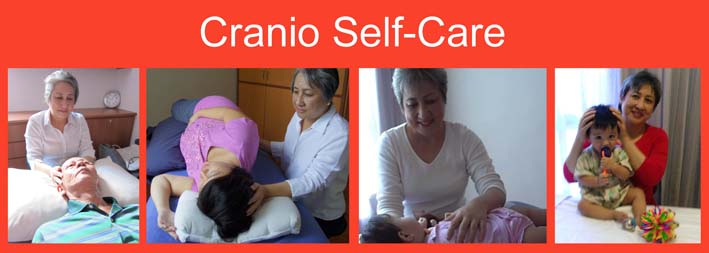
What does “holding your space” means?
My students asked me how do I "hold my space when I am practising cranioscral therapy. How come I am able to move around when I am treating children with autism and sensory processing disorder and yet able to hold my space.
Holding my space has become almost second nature to me as I have been practising cranioscral therapy for more than 15 years, yet I never stop to find ways to fine tune my skills.
To
me it all about being presence.
Definitionn of Presence by Merriam-Webster: a noteworthy quality of poise and effectiveness that
enables a performer to achieve a close relationship with his or her audience.
When we are present, we are centred within ourselves, and are in relationship
with self and those around us. There are
many ways to increase our state of presence.
My favourite is having my awareness and focus on breathing and
heartbeat. When I am tuning to my breath
and heartbeat, I become more aware of rhythms in my body. Slowly and surely I develop a keen awareness
of my body, midline and the tidal rhythms become more evident and clear. Then I form a relationship with my surroundings using my sensory perception of visual, auditory, kinesthetic, smell and taste.
I am also grateful to Sa Chien, a Feldenkrais practitioner who has taught me lots of movement exercises which allowed me to have a keen awareness of my body through movement. All movement in our body expresses the craniosacral rhythms of flexion/extension and inhalation/exhalation.
In order to be able to hold your space it is important to cultivate
qualities such as fluidity, flexibility, stability, balance, connection
and letting go, being centred in your midline and biosphere and connected to
your outer zones and horizon.
Saying this intention each time I begin my craniosacral therapy
session is also helpful in staying present:
I am present.
I am centred.
I am open.
I am aware.
I am awake, alert and clear.
I am connected to myself, to you and to the field
of resources within and around us.
I am ready to hold what emerges within myself and
the space of our interaction from the best of myself.
Source:
Master Practitioner Certification Course Booklet – NLPU200
I am present. I am centred.
With this in mind, I focus my awareness at my solar plexus. i begin to feel the sensory feedback in my solar plexus. Is there a shape, volume, colour, etc.?
What is the sensation like? Is movement, is there temperature?
I am open.
I bring my awareness to my heart centre.
i begin to feel the sensory feedback in my heart centre. Is there a shape, volume, colour, etc.? What is the sensation like? Is movement, is there temperature?
I am aware. I am awake, alert and clear.
I bring my awareness to my head.
i begin to feel the sensory feedback in my head. Is there a shape, volume, colour, etc.? What is the sensation like? Is movement, is there temperature?
Then I align my head, heart and solar plexus. Do I feel congruent? Do I feel safe? This forms my midline. From my midline I bring my awareness to the shape of my body. I am totally aware of my internal space from my midline to my biosphere (the shape of my body).
Slowly I extend my awareness outside my body, then to the room, outside the room, into nature and the horizon.
I realign my internal space with my awareness of external space.
I am connected to myself, to you and to the field of resources within me, without me and around us.
This is when I make contact with my patient.
I am ready to hold what emerges within myself and the space of our interaction from the best of myself.
This is where I am present and aware of my state of balance awarenesss and meeting my patient at the edge.
===================================================================
20 SOURCES OF PAIN THAT ARE DIRECTLY RELATED TO SPECIFIC EMOTIONAL STATES
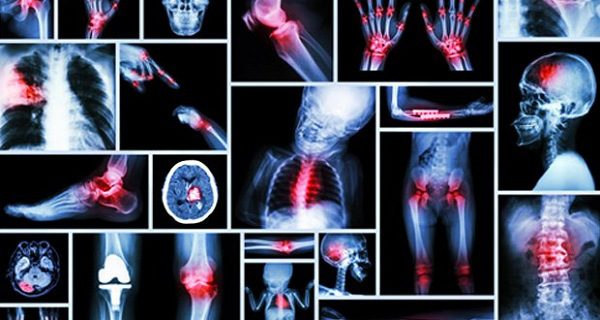
Pain is one of the most common feeling
in our body. Pain has three manifestations and they are energy, perception and
physical manifestation. Each kind of pain may be related to a specific
emotional state in our mind. This shows us that although we are grownups yet we
need to learn many more life lessons in order to learn how to avoid pain. Once
the lesson is firmly incorporated in our lives, understood and learned is a way
that may be transferred to other people, the pain simply disappears.
The body is especially clear when it
comes to pain. The experiences of your life manifest directly in your body
and when you experience emotional stress, your body shows you exactly what the
problem is. The only thing you need to do is decode it.
· The
pain in the musclesrepresents
a challenging ability to move in our lives. How flexible are we being with our
experiences at work, home or within ourselves. Go with the flow.
· The
pain in thehead
( headaches) limit decision making. Migraines occur when we know the
decision to make and we do not take it. Make sure to take time each day to
relax. Do something that will relieve that tension.
· Pain
in the neckis an
indication that you may be having trouble with forgiveness of others, or even
yourself. If you’re feeling neck pain, consider the things you love about
yourself and others. Consciously work toward forgiveness.
· Pain
in the gums is
related to decisions you do not take or that you do not stand. Be clear in
your goals and go for it!
· Pain
in the shoulder may
indicate that you’re carrying a real emotional burden. That’s where the saying
“shouldering a problem” comes from. Focus in on some proactive problem solving
and distributing some of that burden to other people in your life.
· The
stomach pain occurs
when you have not digested, figuratively, something negative. The feeling
of not being respected hole causes a sensation in the stomach, and a grief.
· Pain
in the upper back indicates
that you lack emotional support. You might feel unloved. If you are
single, it might be time to meet someone.
· Pain
in the lower back
might mean you’re worrying too much about money or you’re lacking in emotional
support. It may be a good time to ask for an overdue raise or consider a
financial planner to help you utilize money a little bit better.
· Pain
In Your Sacrum and Tail Bone. You may be sitting on an issue that needs to be
addressed. Get to the bottom of it and you will see resolution.
· Pain
in the elbow has a lot
to do with the resistance to change in your life. If your arms are stiff,
it can mean that you are too steep to things in your report. It is perhaps
time to dare to move things or at least, to let you go!
· Pain
in the arms. You’re
carrying something or someone as an emotional burden. It may be time to ask
yourself why do you keep carrying it?
· Pain
in the hands. The
hands symbolize the link to others, does not connect. If you feel pain in
the hand, it may mean that you do not stretch enough out to others. Try to
make new friends, restore the connection!
· Pain
in the hips. If
you’ve been afraid of moving, that may manifest as a pain in the hips. Sore
hips could be a sign that you’re too resistant to changes and moves.
It may
also show a caution toward making decisions. If you’re thinking on some big
ideas, it’s time to make a decision. General pain in the hips relates to
support. When they slip out, it generally relates to an imbalance in how you
are relating to life. Feeling the lack of love and support.
· Pain
in the joints generally. Like
muscles, pain in the joints are flexible. Be open to new ways of thinking,
lessons and life experiences.
· The
knee pain. The
knee, which can mean “I us” symbolizes our relationship to another subject,
balanced or aggressive. The knee trouble indicates a difficulty to fold,
to accept things as they are. The voltage can be linked to the OUTSIDE
worldlaughing as yourself. The inside of the knee refers to the community,
work, friends; the outside of the knee is linked to personal
problems. Remember: you are a human, a mere mortal. Do not allow your
ego to dominate your life. Volunteering can be beneficial.
· The
Dental Pain expresses
the fact that you do not like your situation. At constant rehashing this
disgust, this affects your emotions in everyday life. Remember that
experience pass more quickly when you focus on the positive aspects.
· Pain
in the ankles shows
that you do not grant you the right to pleasure. It is perhaps time to
become more forgiving towards yourself. Try spicing up your love life.
· Pain
Causing Fatigue. Boredom,
resistance, and denying what it takes to move forward, “What’s next?” Open
yourself to that little voice which speaks very softly and nudges you towards a
new experience.
· The
foot pain. When
you are depressed, you may feel some pain in the feet. Too much negativity
can occur under your feet. Enjoy the small pleasures of life. Adopt a
pet or find a new hobby, a new passion. Seek joy.
· An unexplained pain
in various body parts. The cellular structure of the body is
constantly renewed and during this process, is purged of negative
energies. The immune system and all systems in the body are found in
weakened. So while the body may appear to be in a state of illness, it is
more or less in a state of clearing. Know that it will pass!
Source:
http://www.naturalhealingmagazine.com/20-sources-of-pain-in-the-body-that-are-directly-linked-to-each-specific-emotional-states/#sthash.TROrW16k.dpuf
======================================================
How Much Sleep Do You Actually Need?
Source: https://www.youtube.com/watch?t=20&v=SVQlcxiQlzI
==============================================================================================================
In craniosacral therapy we practice patience all the time. We listen patiently in stillness. We listen patiently in fluid. We listen patiently in potency. We listen patiently until health unfolds in your body system.
Practice
Patience
by Anneli Rufus
Social scientists know that
patience is one of the most important ingredients for success.
Try these tips
to boost yours.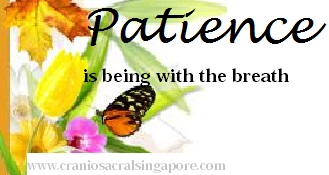
In a recent study, people
were asked to choose between winning a small prize immediately and larger
prizes they would have to wait several weeks to claim. Perhaps unsurprisingly,
70 percent chose the smaller-sooner prize.
But follow-up questioning revealed that those who chose to wait
treasured their rewards more highly than those who claimed their prize
immediately—even in cases where the prizes were identical. And researchers
found another reason to opt out of instant gratification: They noticed that the
act of waiting itself actually increases our capacity for patience.
These days, technology may have rendered the need to wait all but
obsolete, but patience, as both a rational and a spiritual practice, holds
hidden treasures: willpower, anticipation, gratitude, appreciation, faith.
“Patience and self-control are key factors in achieving success
across every aspect of our lives, including school, career, health, and
relationships,” says University of Chicago business professor Ayelet Fishbach,
who led the study. “The reason is that patient people can delay gratification,
control their impulse, and go for the larger prize, which is the key to many
successful outcomes.”
How can you strengthen your patience muscle? Try these tips:
· Incorporate waiting periods into every selection process,
even if you could choose immediately. Fishbach advises: “Basically, don’t make
your decision right away. Wait for a while and you’ll discover that you’ve got
better self-control.”
· Try thinking of patience as a gift you give to yourself and
others. If good things come to those who wait, imagine the joy of sharing your
success with your loved ones when it comes to pass.
· Turn waiting into a practice. Open your awareness: How does
waiting feel in the body, mind, and spirit? Learn to recognize and welcome it
as you would a friendly challenge.
· Turn waiting into a game. “Just thinking about how long
you’ve been waiting could be enough to increase your patience and
self-control,” Fishbach says. The self-confidence boost—Hey, I’ve held out for
a whole week!—can make you feel like a strong winner.
“Practice Patience” by Anneli Rufus was
originally published on Spirituality & Health. To view the original
article, -
========================================================
The Body is a Single Dynamic Unit of Function
There are many unifying systems within the body.
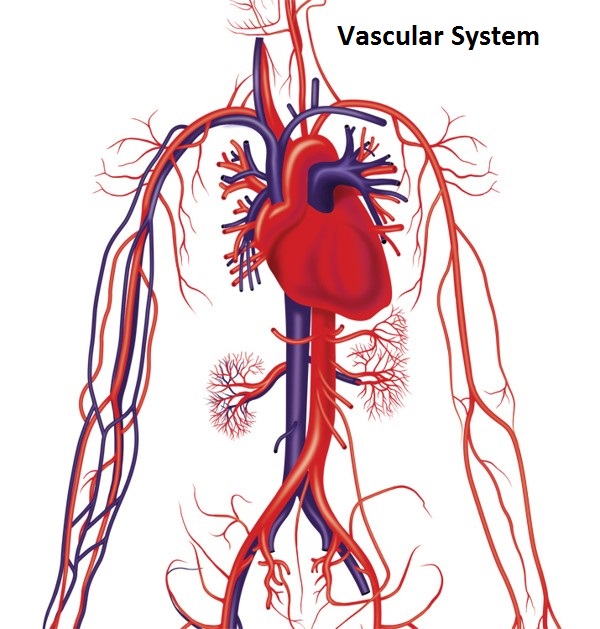 The circulatory system supplies blood to every tissue and organ. The circulatory system supplies blood to every tissue and organ.
The nervous system connects and integrates all of the body’s functions.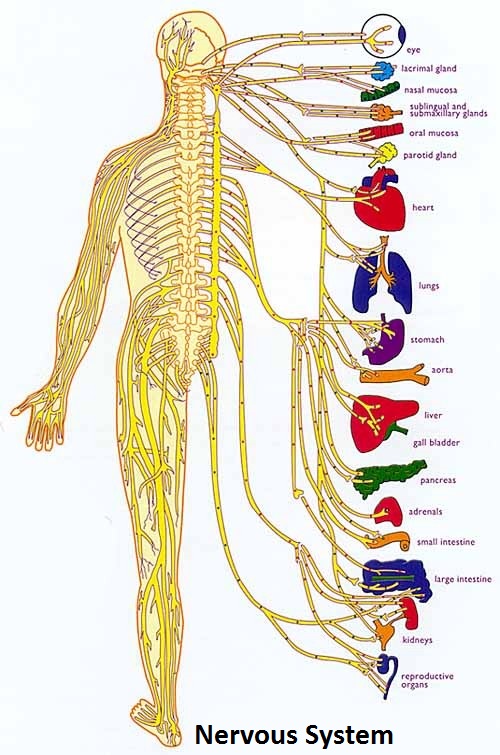
A third unifying system is comprised of a connective tissue matrix called fascia. The fascia is a continuous sheath of living tissue that connects the body front to back, head to toe. It surrounds every muscle, organ, nerve and blood vessel. A primary function of this fascial system is to support and lubricate. 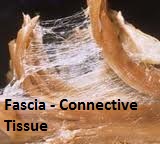
Thus, the circulatory system, the nervous system and the fascia all help to organize the body into a unified continuous whole. No single part exists independent of the whole. When even a small part of the body does not function optimally, the entire person is affected.
Consider the circulatory system. Dr. Still stated, “The rule of artery and vein is universal in all living beings, and the osteopath must know that and abide by its rulings, or he will not succeed as a healer.” Dr. Still used these words to describe the essential need for optimal fluid exchange. When blood and other fluids flow freely, the tissues can perform their physiologic functions without interference. When injury or disease occurs, the result can be a twisting or compression of all tissues, including the circulatory system. The blood and fluid flow becomes obstructed and areas of the body may become under- nourished and vulnerable. This effect may be a significant factor in causing disease. It is similar to trying to water a garden with a kinked hose. The water will not flow properly and the garden will not receive its proper nutrition.
Source: http://www.cranialacademy.com/philosophy.html
======================================================================
Jim Carrey giving his commencement address to the Maharishi University of Management class of 2014.
===============================================================================================================
Your tongue and your taste buds
The tongue is a muscular organ in the mouth. The tongue is covered with moist, pink tissue called mucosa. The tongue is anchored to the mouth by webs of tough tissue and mucosa. The tether holding down the front of the tongue is called the frenum. In the back of the mouth, the tongue is anchored into the hyoid bone. The tongue is vital for chewing and swallowing food, as well as for speech.
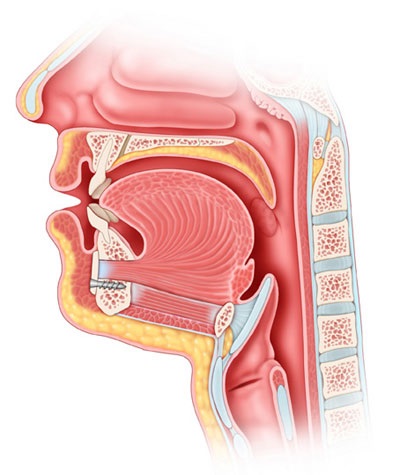
Did you ever wonder why your favourite foods taste so good?
Well, you can thank your taste buds for letting you appreciate the saltiness of pretzels and the sweetness of ice cream.
Taste buds are sensory organs that are found on your tongue and allow you to experience tastes that are sweet, salty, sour, and bitter. How exactly do your taste buds work? Well, stick out your tongue and look in the mirror.
==========================================================
Craniosacral Therapy for Kids

When I was expecting, my mother suggested I visit a Craniosacral therapist. Not because there were any problems with my pregnancy -- on the contrary, I worked until a few days before delivery -- but simply "To make yourself feel even better."
I was rather skeptical about something which basically works on the bones in your head and the fluid in your spine. But the sessions made me feel so relaxed that soon after our daughter was born, I took her to the therapist so she could reassure me there were no post-delivery repercussions at a muscular-skeletal level.
======================================================
========================================================
The Limbic System combines higher mental functions and primitive emotion into one system.
KEY POINTS
* The limbic system, located just beneath the cerebrum on both sides of the thalamus, is not only responsible for our emotional lives but also our higher mental functions, such as learning and formation of memories.
* The primary structures within the limbic system include the amygdala, hippocampus, thalamus,hypothalamus, basal ganglia, and cingulate gyrus.
* The amygdala is the emotion center of the brain, while the hippocampus plays an essential role in the formation of new memories about past experiences.
* The thalamus and hypothalamus are associated with changes in emotional reactivity.
* The cingulate gyrus coordinates smells and sights with pleasant memories, induces an emotional reaction to pain, and helps regulate aggressive behavior.
* The basal ganglia is a group of nuclei lying deep in the subcortical white matter of the frontal lobes; its functions include organizing motor behavior and coordinating rule-based, habit learning.
=======================================================
Do you know that during the birth process, the baby's head molds to fit through the mother's pelvis? It is normal for the cranial bones to override each other. After birth, your baby’s body innate intelligence will self-regulate and these overrides in the baby's skull should not persist. If they do not correct themselves, they can interfere with proper cranial nerve function leading to colic, breathing, swallowing, digestive or sensory-motor impairments and more. Sometimes babies are injured in the birth process. The injuries may be both physical and emotional. Craniosacral helps address these injuries as well as the effects of precipitous or prolonged labour, vacuum extraction, forceps or ceasarean birth.
Cranial sutures

Cranial sutures are fibrous bands of tissue that connect the bones of the skull. An infant's skull is made up of six separate cranial bones:
- Frontal bone
- Occipital bone
- Two parietal bones
- Two temporal bones
=======================================================================================================
Lower Back Pain
Almost everyone will experience low back pain at some point in their lives. This pain can vary from mild to severe. It can be short-lived or long-lasting. However it happens, low back pain can make many everyday activities difficult to do.
==========================================================================
Managing Sensory Processing Disorder with Craniosacral
A group of mothers sharing information about Craniosacral Therapy for the treatment of Sensory Processing Disorder. 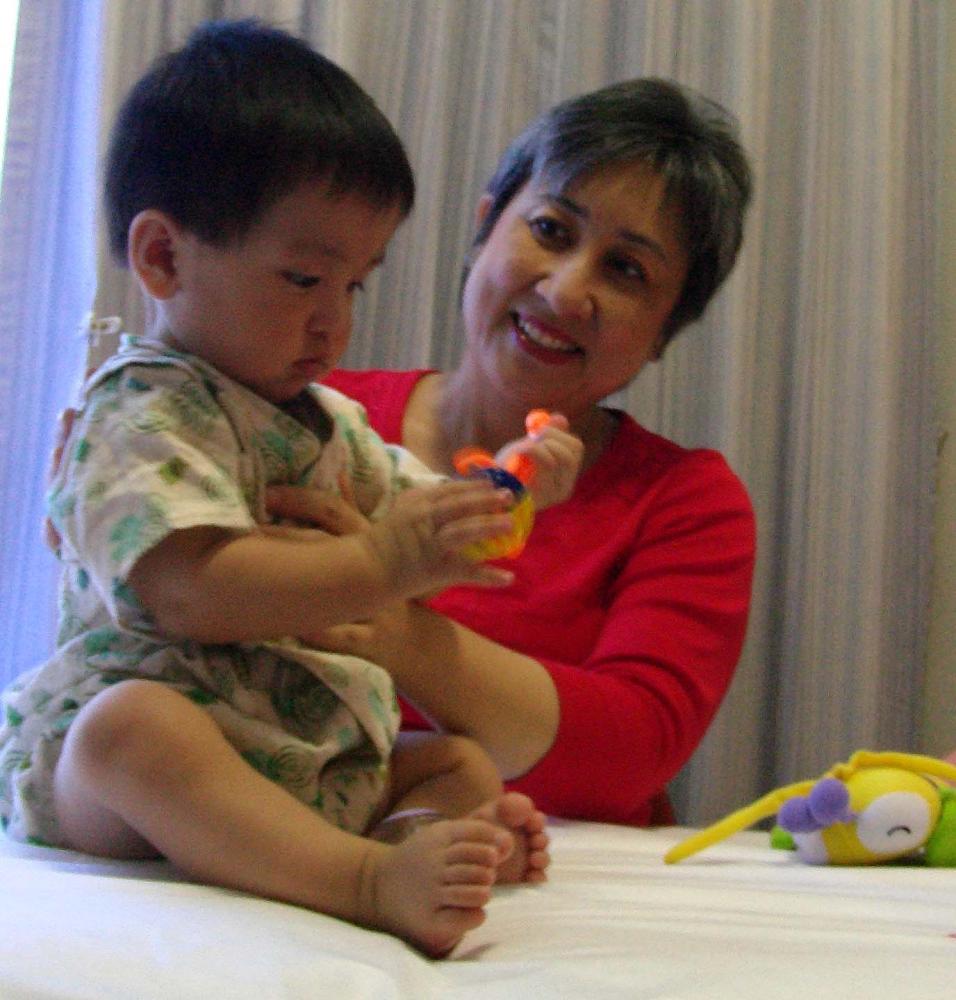
Quote: I can NOT say enough about this! My son suffered from tremendously dibilitating sensory integration issues (to the point where he was nearly asked to leave school) and I had tried every sort of conventional therapy the OT suggested--for 5 years. Finally this past fall (when he was 6) we started craniosacral therapy and manual physical therapy. Well, after the VERY FIRST session we noticed a difference! His teacher even called me at home to ask what I was doing differently! And things continued to improve steadily. I could go on and on about the specific changes but it is probably sufficient to say that he is a totally new child--like, a weight has been lifted off his shoulders. The jist of it is that sensory troubles actually stem from a structural misalignment (often occuring during the birth process) which causes the nerves/spine to be impinged upon, thus triggering a stress on the nervous system. Any further external sensory demand becomes an overload on the already taxed system and an over load on the child. This therapy works to very gently and gradually re-align the structure of the body. So, now for nearly a year we have driven 3 hrs roundtrip once a week so he can receive this treatment (not to mention paying out of pocket). It is the best thing I have ever done for my child. Please, please give it a try. It is completely non-invasive (my son even likes it and often falls asleep during treatment) and just may be the thing you're little one needs. Best of Luck! Unquote
============================================================================
Managing epilepsy with Craniosacral
A group of people sharing information about Craniosacral Therapy for the treatment of epilepsy.
To many health care practitioners, seizures are a particularly puzzling phenomenon. They occur when hyperexcitable nerve cells in the brain fire abnormally. No one knows quite why this happens, and the types of seizures vary.
Epilepsy generally is considered the condition when seizures reoccur, even if they stem from any number of chronic processes that disturb normal neuronal activity. If the seizure occurs once or is correctable, then it's considered non-epileptic.
Whatever the source, seizures in some people respond very well to the gentle approach of CranioSacral Therapy.
==========================================================================================
How Pregnancy Changes a Woman's Brain
We know a lot about the links between a pregnant mother's health, behavior, and moods and her baby's cognitive and psychological development once it is born. But how does pregnancy change a mother's brain? "Pregnancy is a critical period for central nervous system development in mothers," says psychologist Laura M. Glynn of Chapman University. "Yet we know virtually nothing about it."
===========================================================================
How to make stress your friend?
It is not life events that are stressful, it is how we respond to stress. When we are resourced, our body is resilient to stress. In craniosacral, being resourced are activities that supports health in our body. There are many ways for us to stay resourced.
Stress is a natural reaction to demanding or challenging situations relating to our environmental conditions or experiences, which we deal with in our own way.
Stress is our body's way of ensuring our survival by stimulating our fight or flight response.
But when this response is constant and repetitive, without time for rest and recuperation, it begins to affect our health. Click here to view
==========================================================================
Shaping the Heads of the Future: Natural Options for Plagiocephaly 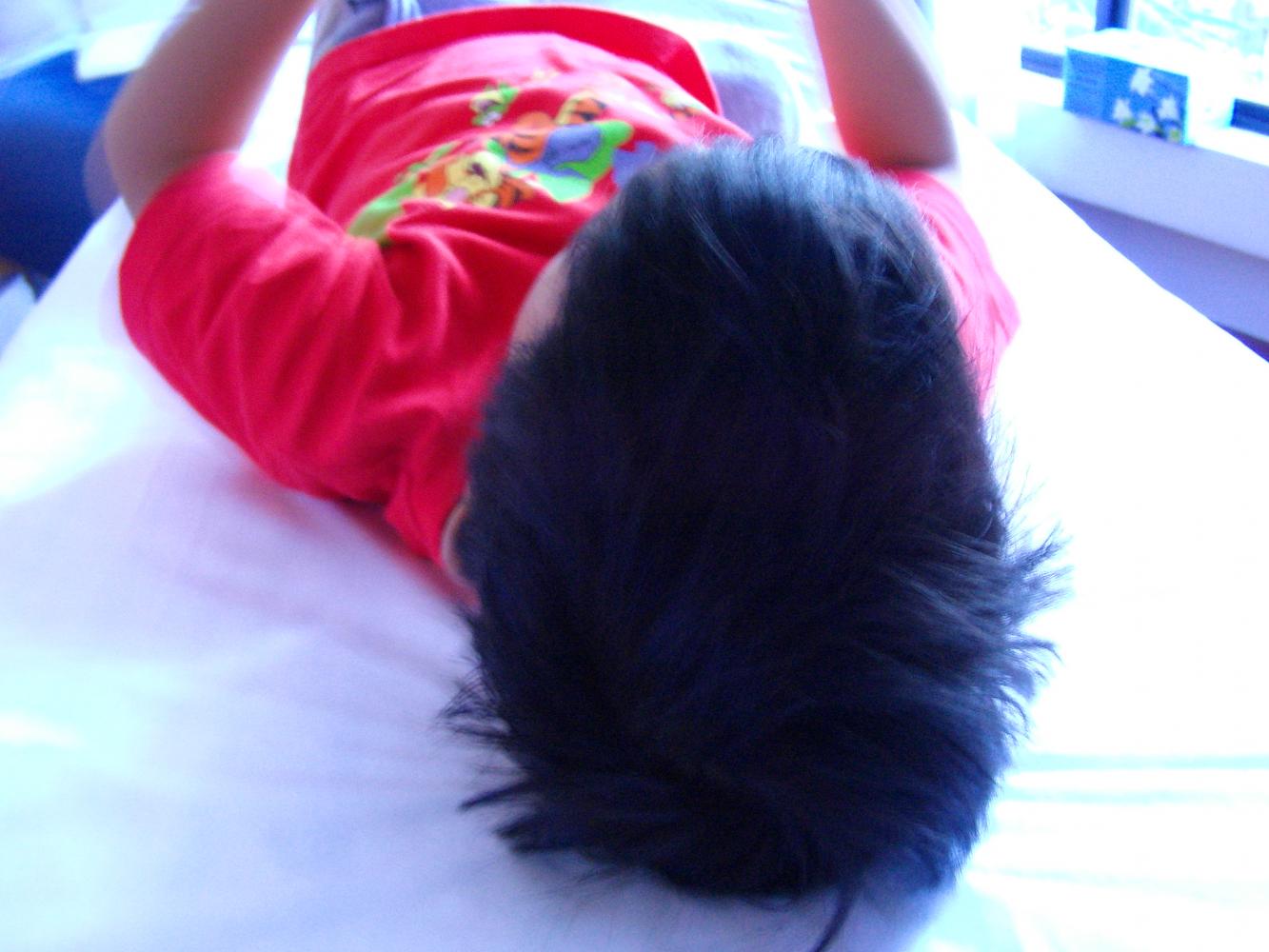
Plagiocephaly is the medical term for “misshapen head”. It has become a prevalent
condition in our infants and toddlers. The current thoughts on the cause of this condition
are “positioning” and “in-utero positioning”. General positioning issues are believed to be linked to the amount of time that babies are spending on their backs. The “back to
sleep” philosophy was adopted when researchers found a possible correlation with stomach sleeping and an increased incidence of Sudden Infant Death Syndrome (SIDS).
Since then, our babies are spending much more time on their backs. In utero positioning refers to how the baby was positioned in the womb.
=====================================================================
Managing colic with Craniosacral
We have heard that craniosacral therapy may help infants who are colicky, and are wondering if anyone has experience with a local practitioner - esp. one that they would recommend. Anon.
Hi, craniosacral therapy ABSOLUTELY helped our newborn, who spent 3 hours in the birth canal. He was very sensitive about his head being touched and hated for us to take off his little cap before the therapy. He cried a LOT. We were very concerned. The compression on his head was still hurting him. Luckily, I had prenatal appointments with an incredible craniosacral therapist who also does amazing work with infants and children, so we called her. She made a house call to us on his 2nd day of life, and another follow up a few days later. The difference after the first session was like night and day. Our lil guy was completely relieved of the pressure in his head and was so happy and peaceful after that with no more ultra sensitivity to being touched on the head. We felt blessed to know this wonderful woman--who has treated our family for the past two years, and facilitated and brought about multi-faceted healing in all of us. I have no doubt a session with her could help your child. It is good to note that follow up appointments are just as important--to track progress--and to realize that some sessions may not be a cure-all/one-dose, but actually a good first step to bringing about healing. Her name is Tomi Knutson, and you can find her at http://www.tomiknutson.com/. In Health, Another Mama!
There are many craniosacral practitioners around but by far my favorite and most skilled recommendation is Holly Edson. She is amazing and the only one I would let touch my infant. http://www.iahp.com/Holly--Edson/ http://www.yelp.com/biz/holly-edson-rn-san-francisco Good luck, Carleigh
yes cranial sacral can help with that as well as tons of other things! we saw rose stamm and she was wonderful! she has been doing this for years and is also an OT for kids at the cameron school. her #215.7615 new believer
Hello parents of a colicky baby, I know everyone is probably telling you this, but it will pass, life will settle down, and you will likely end up with a delightful child. We had a very fussy baby girl until about 10 weeks and then she snapped out of it (after one very depressing regression, so hang in there....). One of the things that I feel helped her most was the CranioSacral Therapy that she received from Sirena Masket (her office is on Piedmont Ave in Oakland, but she came to our home to work with our daughter). Sirena is an Occupational Therapist and CranioSacral Therapist, and is particularly interested in and attuned to the needs of babies and children. Our daughter was noticably calmer during and after her sessions with Sirena, who brought a soothing presence to the whole household during her visits. It is subtle work that I don't begin to fully understand, but I know that it soothed both our's and our baby's nerves! You can reach Sirena at 510-290-8860. We also had great luck using a homeopathic remedy called ColicCalm (order online). Best of luck! Simmin
Wonderful Cranio Sacral practitioner, experienced working with babies and children (and grownups too): Nancy Burke Phone: (510) 236-1007, 237 25th St, Richmond, CA (just off Hwy 80, about 15 mins from Berkeley). www.nancyburkecst.com/ merry
Kim Lyons is a lovely person and gifted practioner and my massage therapist of choice. I can't speak from the vantage point of taking a child to see her (I've only taken myself) but I seem to remember from her website that she is experienced in working with all ages. Her phone number is 510/798-3089 and this is her website: http://www.movingfromwithin.com Hilary
For Craniosacral work, I highly recommend Celine Germain. She is hands down the best massage therapist I've ever been to (and I've been to a lot of them). She is also the most educated massage therapist I've ever met - and I mean educated in massage- she has a gazillion different certifications, and it shows in her technique. She's also very comfortable with babies- I know she's done quite a bit of birth assisting. As to whether she does Craniosacral on babies, I do not know. Her number is (510) 548-4004. I do want to caution that I have heard that Craniosacral work is not appropriate for infants. So I'd recommend doing a little research before you go that route. anon
May 2010
Wondering if anyone has had recent cranio-sacral treatment with Catherine Henderson; I heard she's returned to work after a short sabbatical, and am curious whether she's treating adults as well as children at this time. Andy
Hi there, We recently took our baby to Catherine Henderson. Catherine was recommended to us by a lactation consultant to help resolve our baby's breastfeeding latch issues. We found her to be a bit cold and stand-offish, but apparently she's quite respected in the field and has been doing this kind of work for a very long time. The initial consult was quite spendy: $160! Because we didn't connect with her and because her prices were high, we decided not to book a follow-up appointment. Our lactation consultant also recommended a more affordable place in San Francisco: More Mojo http://www.moremojostudios.com/ Our consultant said she's sent many people there to see Kristine Hicks and they've liked her and seen good results. Good luck! Anon
A group of mums sharing information about Craniosacral Therapy for the treatment of colic.
My kids both have seen her several times; she's amazing. Typically she has a very busy practice and only sees kids, but due to her sabbatical there is now space in her practice for new clients. I highly recommend jumping on that opportunity. FYI, she's an osteopath not a cranial sacral therapist, though perhaps she integrates both.
========================================================
Managing the Meltdown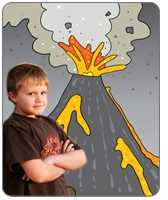
Why do kids have behavioral meltdowns and tantrums? What goes on in a child’s mind that makes him come unglued?
Kids have meltdowns and temper tantrums for two reasons. The first reason is that they have never learned how to manage or have run out of the tools it takes to manage their feelings in a new situation or event. The second reason they have tantrums is because it’s been successful for them in the past. They’ve seen that when they have a tantrum, they get what they want pretty quickly.
Click here to read more
=======================================================================================================================
Craniosacral Therapy for Babies
When I was expecting, my mother suggested I visit a Craniosacral therapist. Not because there were any problems with my pregnancy -- on the contrary, I worked until a few days before delivery -- but simply "To make yourself feel even better."
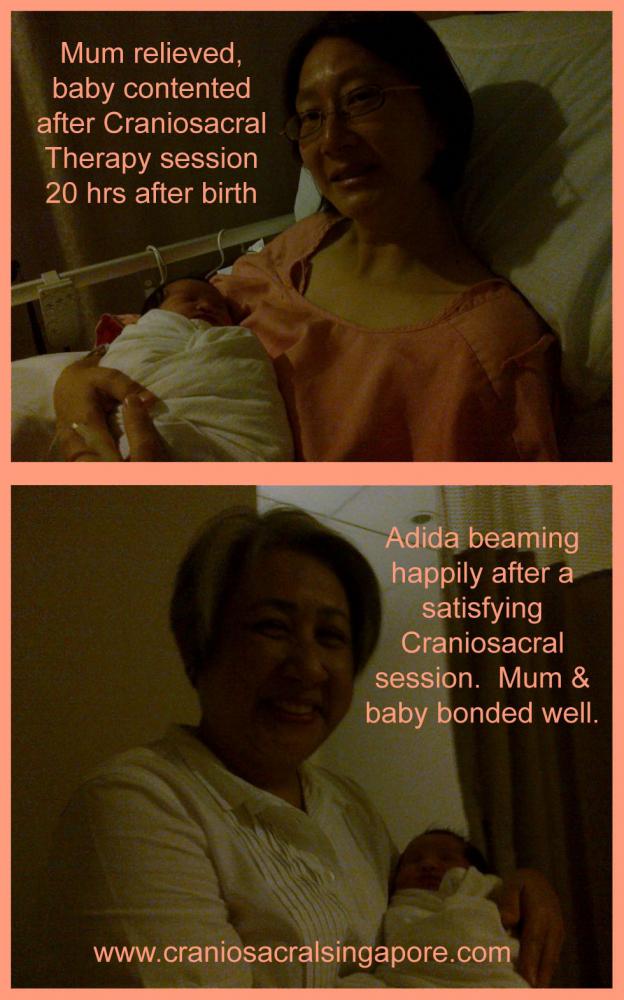
I was rather skeptical about something which basically works on the bones in your head and the fluid in your spine. But the sessions made me feel so relaxed that soon after our daughter was born, I took her to the therapist so she could reassure me there were no post-delivery repercussions at a muscular-skeletal level.
Click here to read more
========================================================
Applications of CranioSacral Therapy in Newborns and Infants, Part I
By John Upledger, DO, OMM
CranioSacral Therapy has proven effective in identifying a number of disorders affecting children, including dyslexia, hyperkinetic behavior and motor-control problems.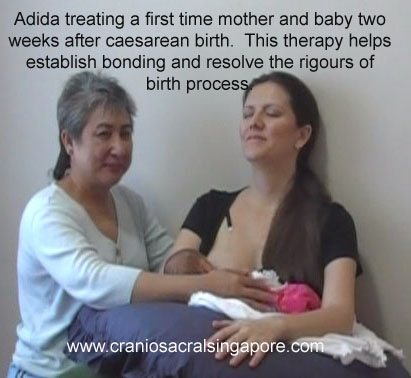
It's also good at alleviating such conditions when they're caused by restrictions in the dura mater membranes of the craniosacral system. I believe the few minutes necessary to conduct a craniosacral system evaluation in the delivery room, or shortly after birth, is a worthwhile investment in any child's future health and well-being.
=====================================================================================================================
Easing Migraine Pain
By John Upledger, DO, OMM and Lisa Upledger, DC, CST-D, FIAMA
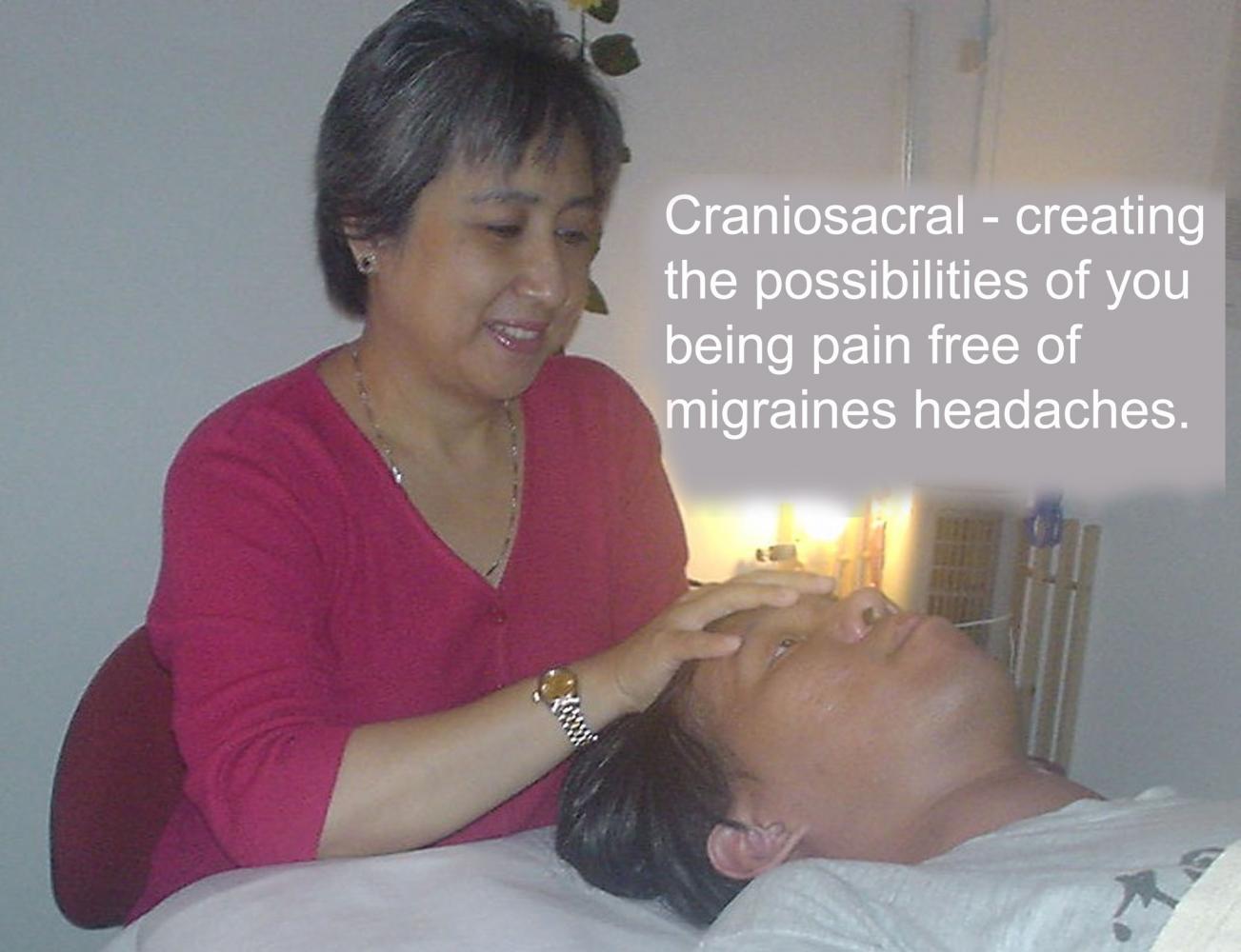
Gone are the days when migraines were considered a psychological disorder reflecting poor coping skills, low stress threshold, clinical depression or a borderline personality disorder. According to the National Migraine Association, migraine disease is now a recognized neurological condition affecting more than 30 million Americans.
In many cases, CranioSacral Therapy is one of the most effective tools you can offer a client suffering from migraine pain. This light-touch modality helps release restrictions in the meningeal membranes around the brain and spinal cord, increasing the healthy flow of cerebrospinal fluid and allowing the central nervous system (CNS) to resume its optimal levels of performance.
=================================================================================================================
© Mike Macy, CST
There are many improved approaches to allergy elimination. Most involve nourishing the
associated organs, avoidance, desensitization, and energy work. As good as they are, they often involve eating cases of supplements and having numerous treatments. There is one new
approach that cuts right to the chase. It involves working directly with the immune system to stop allergies in their tracks, without drugs, surgery, supplements, or multiple sessions.
This work comes from Dr. John Upledger, DO, those team of researchers at Michigan State
University proved the existence of the CranioSacral System in the late 1970s. Elegant in its
simplicity, Dr. Upledger’s protocol eliminates allergies by using the cranial rhythm to access the
body’s wisdom and healing potential. This makes it possible to determine when the allergy began, what was going on at the time, release any related emotions, issues, or beliefs lodged in the tissues, and then works directly with the thymus gland to both strengthen the immune system and dial back the immune system’s reaction to the allergen. For a given allergen, this can often be achieved in an hour or two..
====================================================================================================================
Breastfeeding and tooth decay -

What the research says Blaming prolonged breastfeeding or breastfeeding to sleep for tooth decay is very common. The belief that breastfeeding to sleep causes dental caries is based on only 3 articles by Bram and Maloney1, Gardner, Norwood and Eisenson2 and Kotlow3 that were done in the late 1970s and early 1980s. The authors presented case reports of just nine babies in total, two of whom also received bottles. Case reports have a very low level of scientific evidence; not one of them included any experimentation or trials. The conclusions in these articles were based on this small number of case reports and on the dentists’ own inadequate understanding of breastfeeding.
Click here to continue reading
================================================
Meditation reduces the risk of depression in schoolchildren
 Emma Innes, Mail Online: Children who are taught meditation are less likely to develop depression, a new study has revealed. Emma Innes, Mail Online: Children who are taught meditation are less likely to develop depression, a new study has revealed.
Teaching children a form of meditation called ‘mindfulness’ – a psychological technique which focuses awareness and attention – can reduce a pupil’s stress levels meaning their mental health improves.
The technique can also improve their academic performance, the researchers found.
Scientists at the University of Exeter, the University of Oxford, the University of Cambridge and the Mindfulness in Schools Project (MiSP), taught 256 pupils aged between 12 and 16 the MiSP curriculum.
============================================================================================================
Helping Babies Heal from Difficult Births with CranioSacral Therapy
Newborns and infants express themselves by gurgling, crying and wailing. But what if you feel like you can't satisfy their needs or simply don't know what's going on? In CranioSacral Therapy, we "listen" to what a baby has to say with our "thinking, feeling, seeing, knowing fingers," a term that the founder of Craniosacral Therapy, W.G. Sutherland, coined. We use touch to learn how trauma or difficult experiences have left their mark on the baby. This gives us important information about what's happening with a baby who seems upset or unhappy.......
|


